Aputure 300D
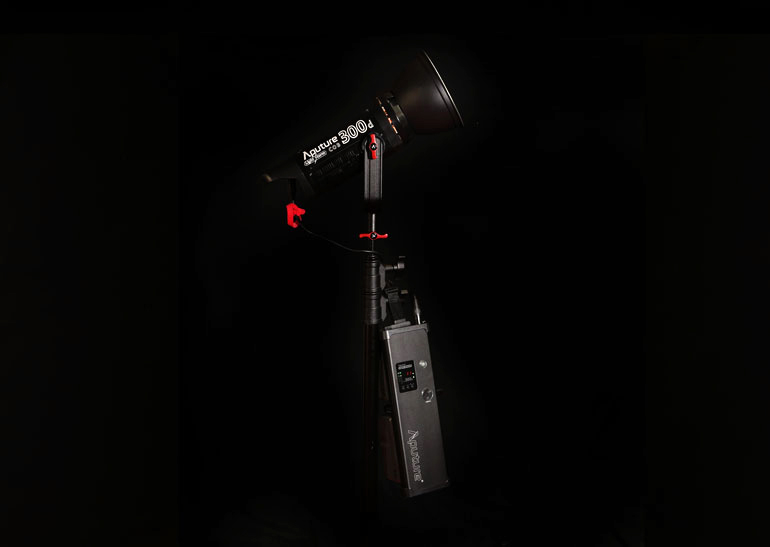
About a year ago at NAB 2017, Aputure unveiled the Aputure 300D LED, a big brother to their first fresnel light, the LS C120D. Apart from a few details, the major significance of the Aputure 300D was its brightness. Like, three times as bright as the 120D. Sun-defeating bright. And yet, still powerable with common professional batteries.
Heads were turned, and the video world got excited. Really, really excited.
In fact, the Aputure 300D took home multiple Best of Show awards from broadcast and video news outlets. Imagine, at NAB, where pretty much all the major manufacturers in this industry announce their most anticipated products, the most talked about piece of gear was Aputure’s second fresnel light ever.
That’s quite an achievement for any company, but for Aputure it’s an even bigger deal, considering they’ve only been around for a few years, and had been relegated to little corners of the NAB show floor in previous years.
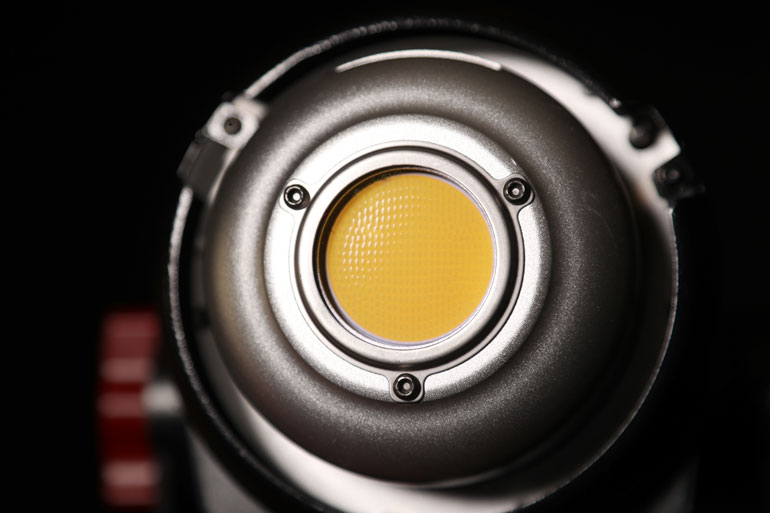
Following months of anticipation, Aputure began to ship out the first 300D units at the end of 2017. As can happen with first generations of new products, the initial models ran into some hiccups (more on that further down below). But by now, any of the manufacturing defects have been ironed out, and production crews have been using them steadily on narrative, documentary, and corporate shoots.
So where does the Aputure 300D stand today, now that it’s available in all its glory? Does it deserve the excitement and praise it initially received from the video world? More importantly, does it deserve a place in your gear bag?
TL;DR - In the world of lighting, it’s usually futile to search for one god light that does it all, with a mix of power, portability, and a price point that satisfies everything in one package.
But the Aputure 300D comes close to fulfilling that wish today. We recommend it for any documentary or corporate video shooter who prizes portability and versatility, but more often for gigs within driving distance rather than via airplanes.
Aputure 300D Specs
First, let’s get specs out of the way. The 300D boasts an impressive illumination equivalent to a traditional 2k tungsten or a 400w HMI. With the fresnel lens attachment, the 300D outputs approximately 40,000 lux at 1 meter. But while a 2k tungsten can weigh over 20lbs, the 300D comes in at under 5 lbs, and can be powered with two V-mount or Anton Bauer batteries.
Even without the optional fresnel lens, the 300D with its included reflector outputs 11,000 lux at 1 meter, and that’s at a 120 degree beam angle. Aputure’s flagship LED panel, the Light Storm LS1S, outputs about 10,000 lux at 1 meter, but that’s with a spot 25 degree beam angle.

If you’ve read our article on the Aputure Lights, you’ll know that beam angle has a huge effect on lux reading, since the brightness is only measured from one spot. So the tighter the beam angle, the much higher the lux reading.
That’s why the Aputure 300D one-meter output can go from 11,000 lux with the reflector at 120 degree beam, to 26,400 lux with the fresnel at its 42 degree flood beam, to 40,000 lux with the fresnel at its 12 degree spot beam.
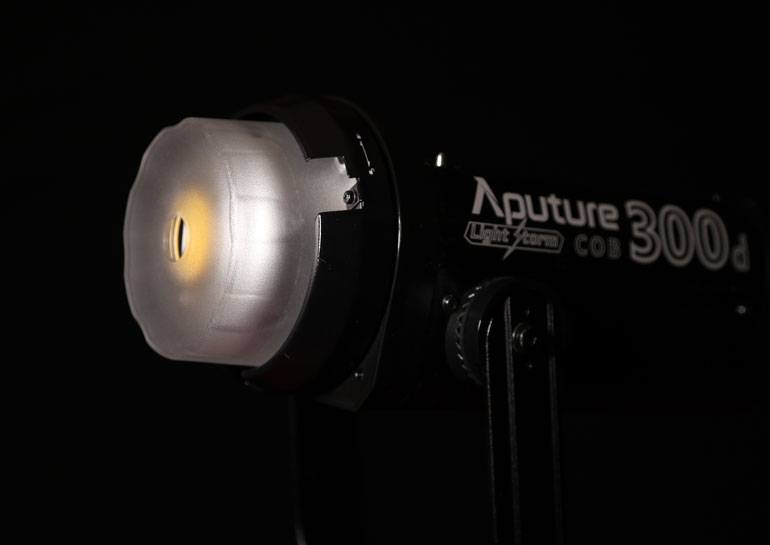
The 300D comes with a safety cover for travel
In addition to sheer brightness, the 300D features a CRI rating of 95+ and a TLCI rating of 96+. At NAB, someone was walking around testing the CRI and TLCI ratings of various lights, and we can confirm that Aputure lights received very high ratings indeed.
The 300D includes the standard control unit that we’ve seen with the other Light Storm lights, which can be adjusted wirelessly with the included remote control. That control unit can be hung from a light stand, serving double duty as a counterweight. The primary difference with this control unit is that it’s quite long, in order to fit the two battery slots.
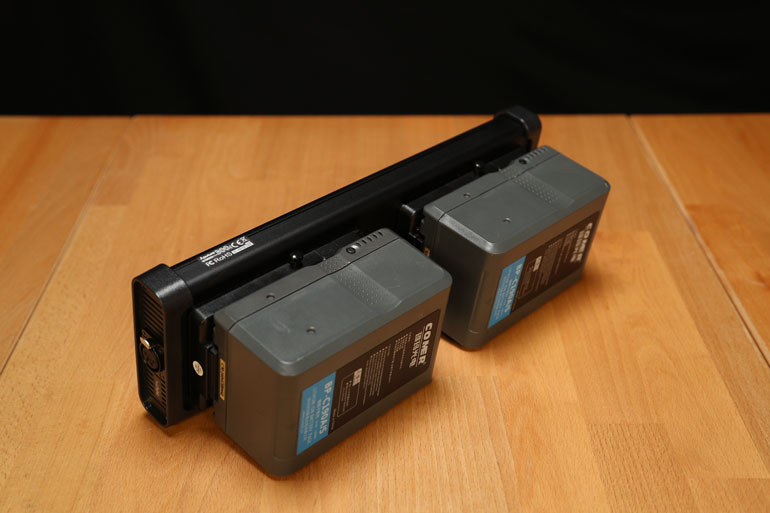
Meanwhile, there’s a seperate AC adapter unit, which is also quite a bit larger than most AC adapters that come with LED panels. The light itself has a very quiet fan - something to do with the fans running in opposite directions, cancelling each other out. But the AC adapter has an integrated fan and it’s not that quiet at all.
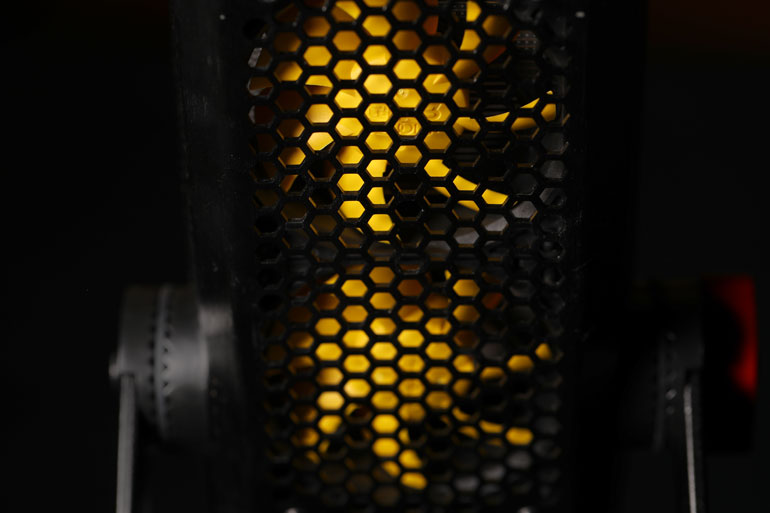
Two fans run in opposite directions to minimize the noise
The Aputure 300D is daylight rated, or 5500K, which means it’ll require gels for tungsten output. If you are planning to use barn doors for hard lighting, applying a gel will be quite easy. But if you want to use a large diffuser like the Aputure Light Dome, you may need a creative gel solution to apply near the LED itself, but not close enough for the gel to melt. More on this later.
The COB - or Chip On Board - is billed as one large LED source, which promises to have a more natural cast than a series of spotty LED bulbs. While we understand the value of a single source of light over a series of bulbs, we’re not sure how the COB differs from a diffusion screen placed over a LED panel, considering that behind the COB light emitting area is still a collection of small LED bulbs.
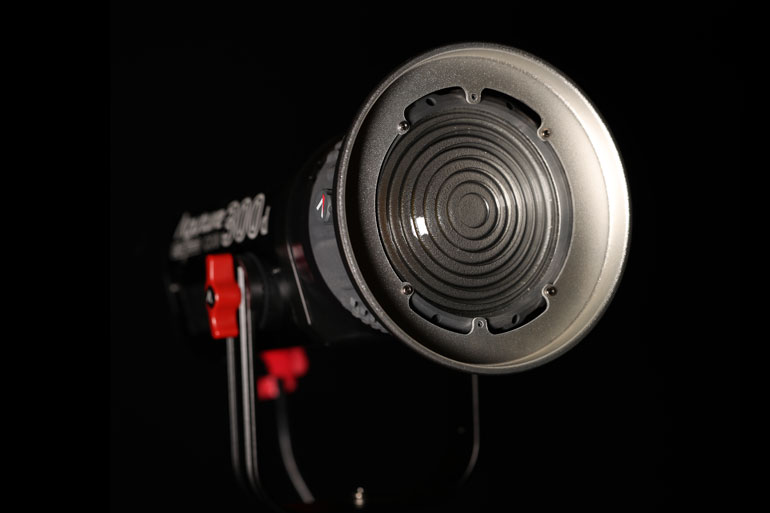
Like the Aputure 120D, the 300D utilizes a Bowens-S mount, allowing for a wide range of light modifiers, from a fresnel lens, to an octagon softbox, to a beauty dish to barn doors. Thanks to this standard mount, one of the main benefits of this type of light - apart from brightness - is that it’s so much more flexible and versatile than a LED panel.
And to package it all up, Aputure kindly includes a pretty nice, custom bag with the 300D. It is large enough that it can carry the additional fresnel lens along with the reflector, if packed right.
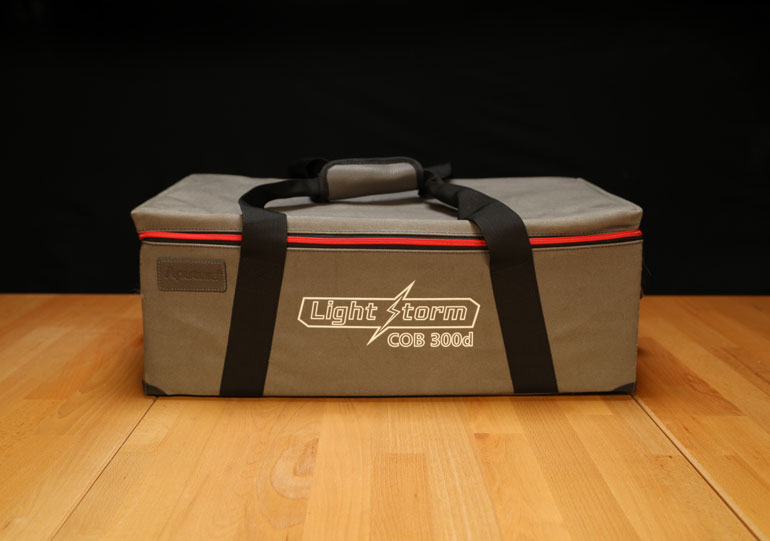
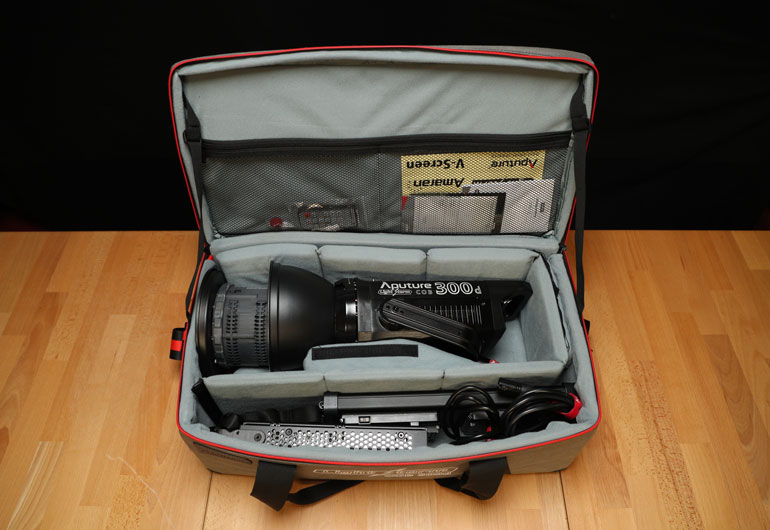
When Brightness Matters
Ok, so now that we’ve got some of the standout specs out of the way, let’s dive into the meat of this article, our hard hitting opinions (without the journalistic integrity to back up our claims).
First and foremost, the number one reason to consider this light over the myriad of other LED lights out there is that it kills in the output department. The race for brightness has dominated the LED lighting industry in the last few years, and the Aputure 300D vastly outperforms the competition in its price point and target market.
Clearly, output isn’t everything. Many lights recently, like the industry standard Litepanels Astra, have released softer versions with more aggressive diffusion panels, in response to consumers demanding a return to light softness over an unwavering pursuit of brightness.
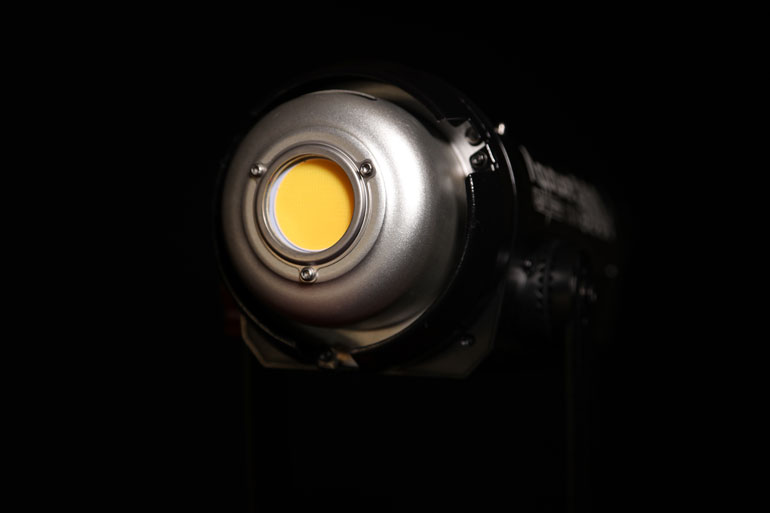
But the LED panels that have built in diffusion are targeting run and gun filmmakers who have very limited setup time. The Aputure 120D and 300D fresnel lights, however, aren’t intended to be used on their own without any modifiers. In fact, their versatility with light modifiers is what makes them so appealing.
And when you’re going into a situation with the expectation of using modifiers, you want your raw light output to be as powerful as possible. Most umbrellas and diffusion cloths and soft boxes will cut a light’s output significantly, potentially reducing up to 50% or more of the light’s raw output.
This is why the Aputure 300D is such a knockout light for the price point. For filmmakers who are simply looking for raw output to pair with their favorite diffusion kits, the 300D delivers a lot of bang for the buck.
Now add to the 300D the fact that it can be powered by any standard household output, or even a couple V-mount or AB batteries, and you get another notch in its belt. On top of all that, the fact that it’s lightweight and can be hung safely without a robust rigging platform, and you have a light that starts to turn many heads.
Defeat the Sun
The other reason why the Aputure 300D is so appealing for filmmakers who already have a supply of other lights (like us) is because it could actually open the door to more outdoor shooting.
We have a bias whenever we’re shooting documentary or corporate interviews, in that we nearly always push for indoor setups. Partly that’s because we can control the audio - there’s always a last minute leaf blower, lawn mower, or airplane that shows up right when you start rolling.
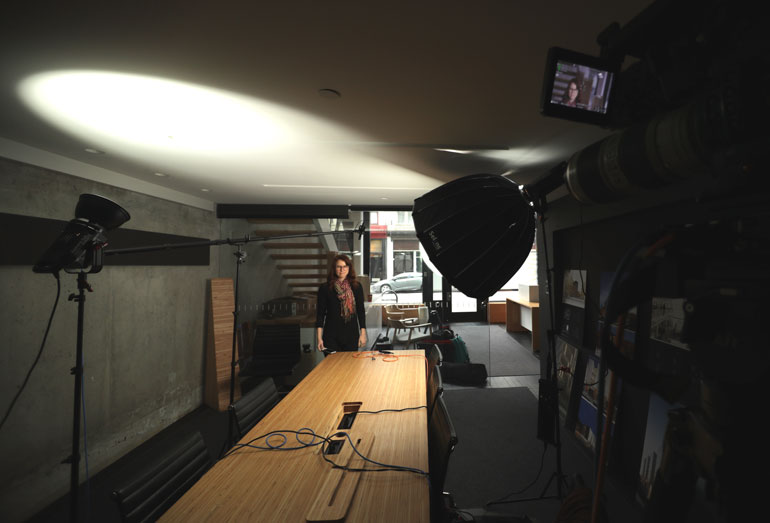
300D in a Light Dome as key, and 120D bouncing off ceiling for fill
But in addition to the sound factor, we insist on indoor settings because most LED panels can’t overpower sunlight. Even on cloudy days, LED panels need to be placed directly next to subjects, in order to frame an image where a subject’s skin tone is brighter than the background. And even then, the output is usually not enough.
The alternative to using powered lights outdoors is to control sunlight with reflectors, flags, and scrims. To their advantage, these are all simple and affordable tools that don’t rely on any sort of battery or plugin power to work. But in practice, scrims and flags need medium duty rigging to remain in place outdoors in mild conditions, and heavy duty frames to keep the subject and crew safe in slightly windy conditions.
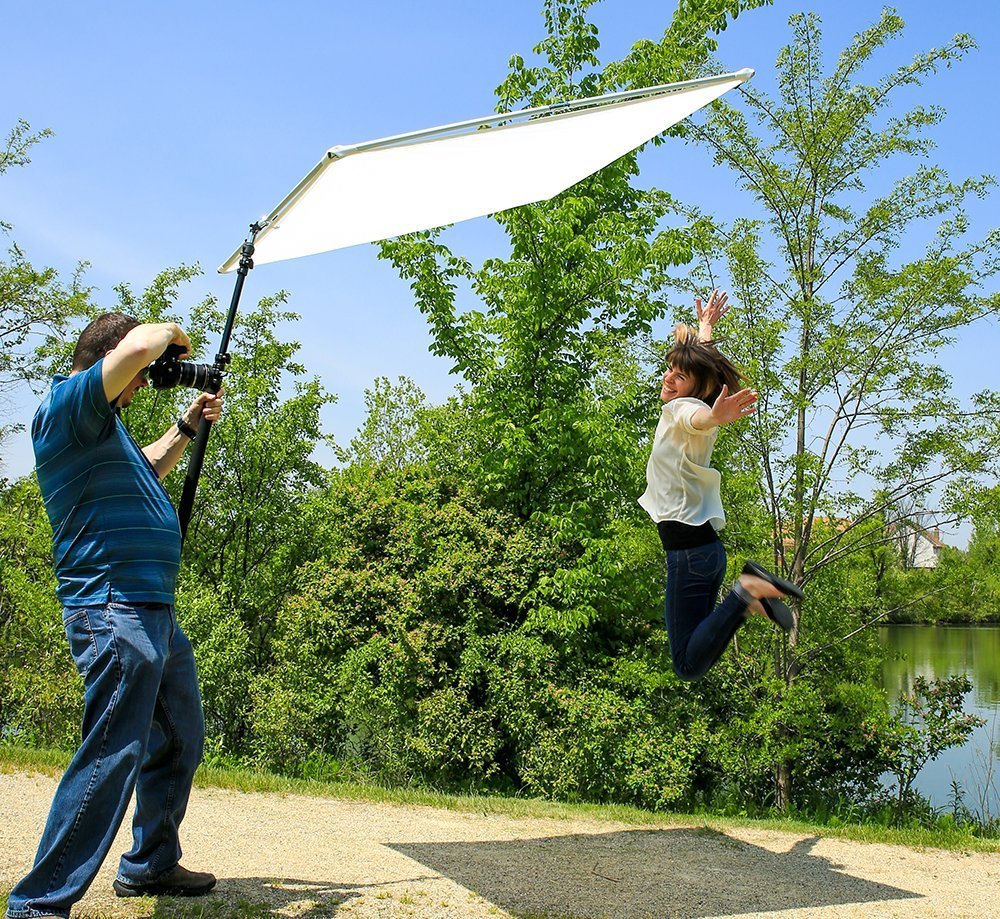
I'll just do it all myself, no big deal
Reflectors, while deceptively simple and very cheap - literally a plastic board from any grocery store could be used as a sun reflector in a pinch - they almost always require a second hand to hold and control during an interview. And because their angle of light tends to be narrow, a slight shift of the reflector or subject can create a flying light source that moves around the subject’s face in a highly distracting manner.
And so, we stick to bright LED panels for outdoor scenarios, and up until now, our favorite outdoor light has been the Aputure Light Storm LS1S. It’s incredibly bright and has a 25 degree angle that covers the subject without wasting unused light spread on a bright outdoor background.
The main issue with the LS1S for outdoor scenes is that you still need it fairly close to a subject, which at 100% becomes quite blinding to the average person not used to bright lights in their eyes. The secondary issue is that if you try to use diffusion - like the simple and cheap D-Fuse softbox - it cuts down the LS1S output too much to be used outdoors. And so you must deal with a naked LED panel as your key light - not the most ideal lighting setup.

300D on a Manfrotto Nano Stand with an umbrella
The Aputure 300D, however, can be placed comfortably far from your subject on practically any light stand, and it doesn’t need to be manned by an assistant. (We prefer the Manfrotto Nano Stand for all our traveling lights, but some light stands like this LumoPro one have ground spikes for outdoor use, too). And with the fresnel lens adapter, you can control the beam and intensity of the light to a much finer degree than by moving around the LS1S and adjusting its barn doors.
With the 300D placed farther away from the subject than a typical LED panel outdoors, even at 100% it ends up being less intensely blinding and distracting for the subject, simply because it’s further away. Alternatively, you could move the 300D close to the subject and place an umbrella, see-through diffuser, or any other modifier that you like to use, and even outdoors the 300D will provide adequate light in moderate sunlight.
What makes all of this possible is the 300D is the first light we’ve come across that is powerful enough but portable (and affordable) that we can use it outdoors as our main light, without going full force with a generator or other lighting solutions that are appropriate for narrative filmmaking, but not so much for one-man-band documentary and corporate shooters. The 300D can run for over an hour with two 190WH V-mount batteries, at max brightness, which is enough for most of our interviews.
Aputure’s first fresnel, the COB 120D, has many of the same benefits as the 300D for indoor shooting, but we found that it’s not quite powerful enough to outperform the LS1S for outdoor shoots, especially with any kind of diffusion. The 300D, however, nails it.
Aputure 300D Power Unit
In order for the main light unit to be quiet, lightweight, and relatively small, the bulk of the 300D’s meaty stuff is shifted to the control unit and AC adapter unit. In fact, there are three components, which can make setup a little bit of a hassle.
First, the 300D connects to the control unit via an XLR cable. The control unit has just two buttons, an on/off button and a brightness dimmer wheel. Ideally you would hang this somewhere on the light stand within easy reach.
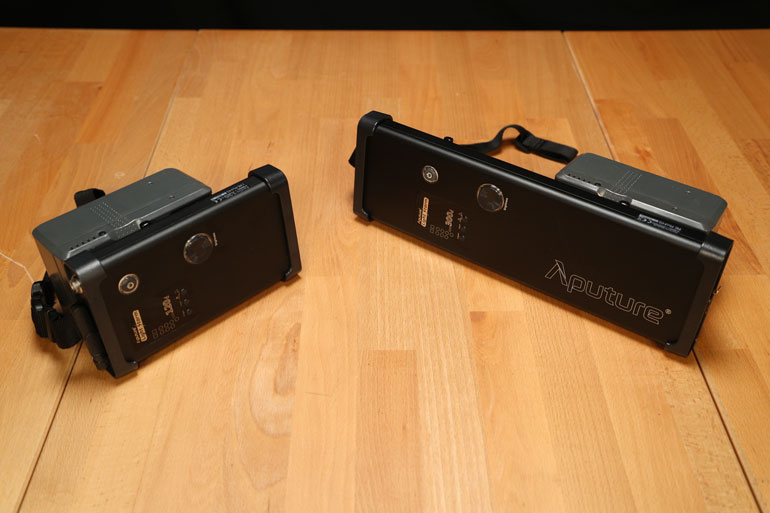
The 300D control unit roughly the same control unit that comes with all the other Light Storm lights. Except that it’s abnormally long, because it has to fit two battery inputs. Yes, it looks and feels abnormally long, to the point where clients or subjects might notice how weird that thing is. But if you hang it on the light stand down near the legs, it will serve as not only a counterweight but also will be out of anyone’s eyesight.
Finally, the control unit connects to the AC power brick with another XLR cable. It’s bigger than most other AC power adapters you’ve ever used, but compared to the 300D control unit, the power brick doesn’t seem so large.
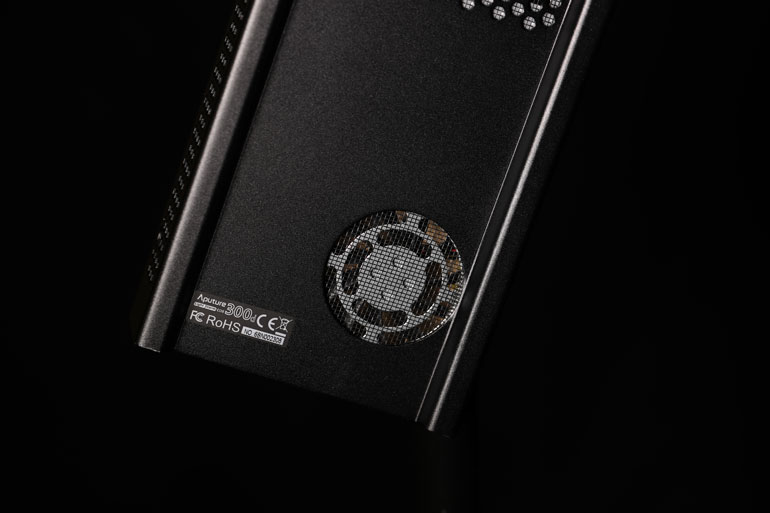
It is, however, fairly loud. To the point where a few 300D users have complained to Aputure about the noise. We don’t have any issue with it, because it can be placed far from the the light and the subject and microphones. If you want it even further away, you can buy a longer XLR cable than the one that comes with the 300D. In fact, we recommend everyone get one - Aputure LS 300D Extension Cable.
The last piece to the puzzle is the power cable that goes from the power brick to the wall plug. So in total, you need to keep track of 3 cables and two power units to run the 300D from mains power. If you’re using batteries, you only need the control unit.
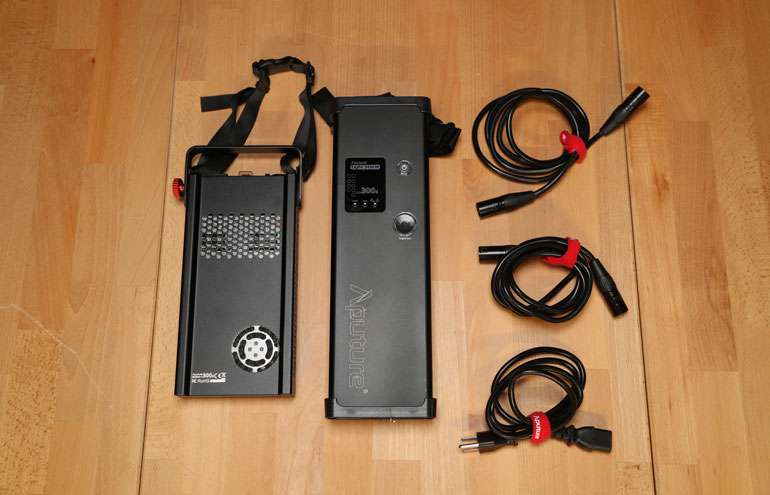
After using the Light Storms many times over the last couple years, we’ve gotten accustomed to putting together all the control and power bricks and cables any time we unpack a light. It does get potentially confusing if you have multiple Aputure lights, so you have to make sure you have a good packaging and labeling system.
Newcomers to Aputure lights might get overwhelmed with all the components you have to piece together, but that’s the price to pay for using powerful lights that don’t include the controls, battery connections, and power source on the light itself.
Aputure Light Dome and Light Dome Mini
As soon as we got the 300D, we went out and purchased an Aputure Light Dome and Light Dome Mini. For our Aputure 120D review we really enjoyed using a simple shoot-through umbrella, but the release of the new custom softboxes seemed like a good match for Aputure’s COB fresnel lights.
Truth be told, the Bowens-S mount on the 300D can accept a wide variety of standard photo and video light modifiers. But Aputure’s versions are quite affordable, so if you don’t already have Bowens-S diffusers, they’re a good bet.

Even with the warnings, the Light Dome is much bigger than we expected, in that it’s deep and requires a lot of space. It dominates a small conference room. However, the performance is worth it, as the soft wrap-around light coming from the 300D and Light Dome combo has become our favorite key light for interviews.
Out of curiosity, we actually bought a lookalike replica of Aputure’s Light Dome from this Amazon seller. The Selens is nearly half the price of Aputure's Lght Dome, and we wanted to know how if it was simply a rebranded Aputure Light Dome. Turns out, it’s a little different. The secondary interior diffusion connects to the inside of the dome in a slightly different way.
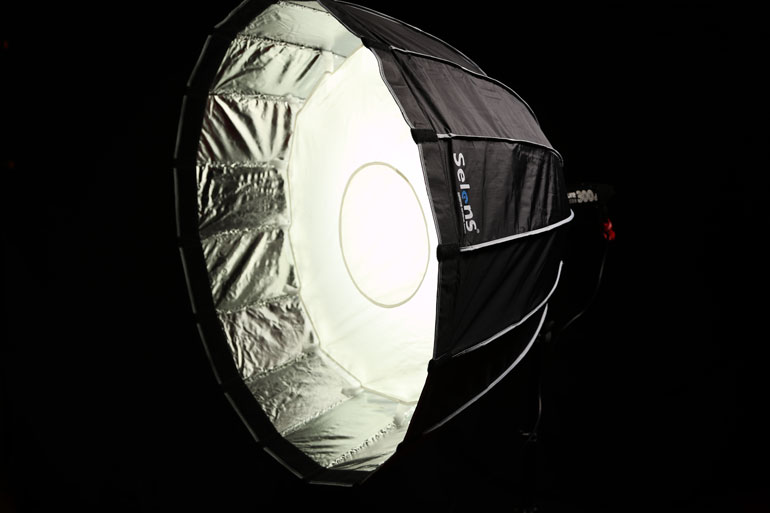
The Selens octagon also offers larger sizes, believe it or not. In addition to the 36-inch version, there's a 48-inch, 60-inch, and a whopping 75-inch version. We're not sure how that would even fit in a room. But probably the best feature of the Selens is that you can get an optional honeycomb grid accessory, which Aputure doesn't have available for the Light Dome.
Our main complaint of the Light Dome (and replicas) is that it is quite difficult to setup and take apart. You have to use all your strength to bend the rods into place, and it feels like at any moment a rod could snap back and really injure you or someone nearby.
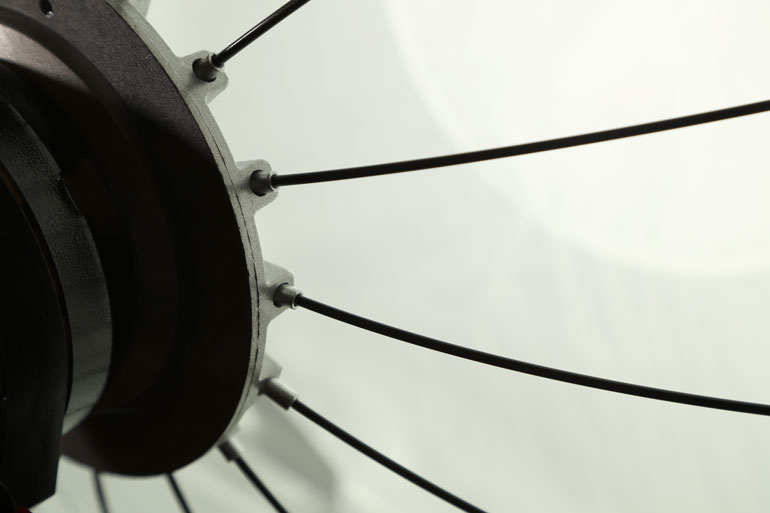
Turns out we weren’t the only ones to complain about the setup time. Aputure listened, and has recently announced a Light Dome II, which supposedly can be setup in seconds We’re very excited to try it out.
In the meantime, 300D owners have found other compatible Bowens mount octagonal softboxes that are quick to setup. The Fotodiox EZ Pro comes in several sizes and supposedly can be set up in seconds. And the Godox Octagon also opens like an umbrella and is very cheap. We haven’t tried them, but they look to be dependable, easy to setup, and you can pick and choose a size that’s more appropriate to your needs.
Light Dome Mini
Whereas the full size Light Dome is a little large both unpacked as well as collapsed, the Aputure Light Dome Mini solves the problem of portability while also working as a decent softbox.
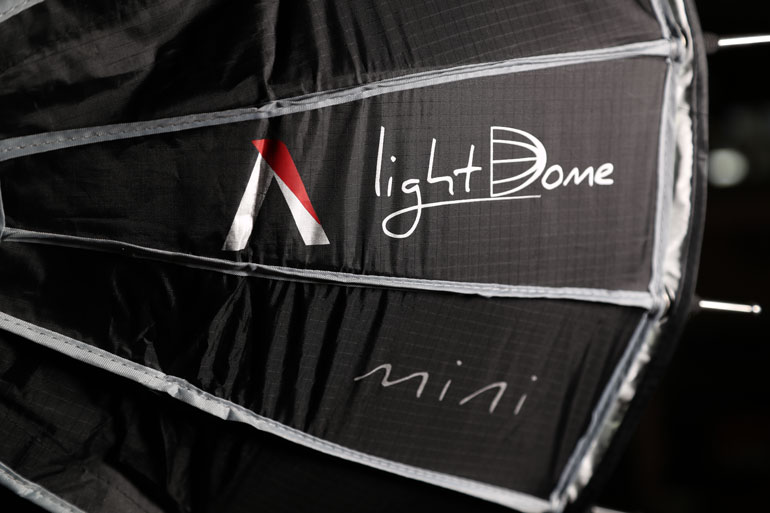
Like its big brother, the Mini uses a Bowens-S mount, with stiff rods connecting the base to the exterior material, and two layers of diffusion work in conjunction to soften the 300D output. The inner reflector has both a silver and gold side, which gives the output a little warmer tone.
The full size Light Dome is 35 inches across, and over 24 inches deep. The Mini is 27 inches across, but only 10 inches deep. Since the rods don’t break down into smaller pieces, it makes the full Light Dome a fairly long piece of equipment to pack. It will have to go into your tripod bag, since it won’t fit into the 300D bag or anything less than a large suitcase.
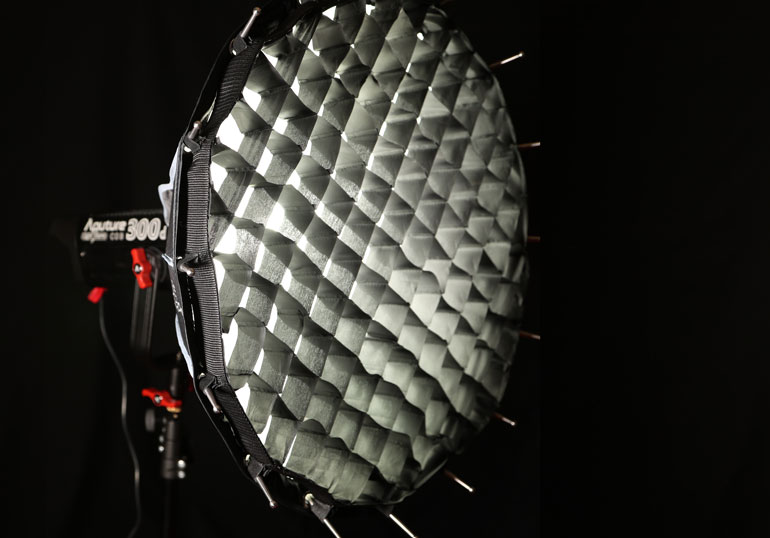
Despite its size, somehow the rods on the Mini end up being even more difficult to arrange along the base than the full size Light Dome. It really feels like you could lose an eye if one of the rods popped. Actually, we’ve had a few bloody fingers when putting the Mini together, and after only a few uses the material ended up ripping apart at one section, while we were attempting to collapse it.
The other scary part of the Mini is the rods stick out quite far from the face of the dome. It definitely looks and feels a little ominous - if you hung it above a subject, it would probably make everyone a little nervous. The good news about the rods sticking out is it makes attaching the included honeycomb grid really convenient. But velcro would also be convenient, without looking like something out of Game of Thrones.
Aputure 300D and 120d as a pair
Together, we really enjoy using the 300D as the key light, and the 120D as a fill. The 300D feels at home in the Light Dome, and the 120D works nicely in the Light Dome Mini, with the grid attached. This has become our go-to setup for shoots within driving distance.
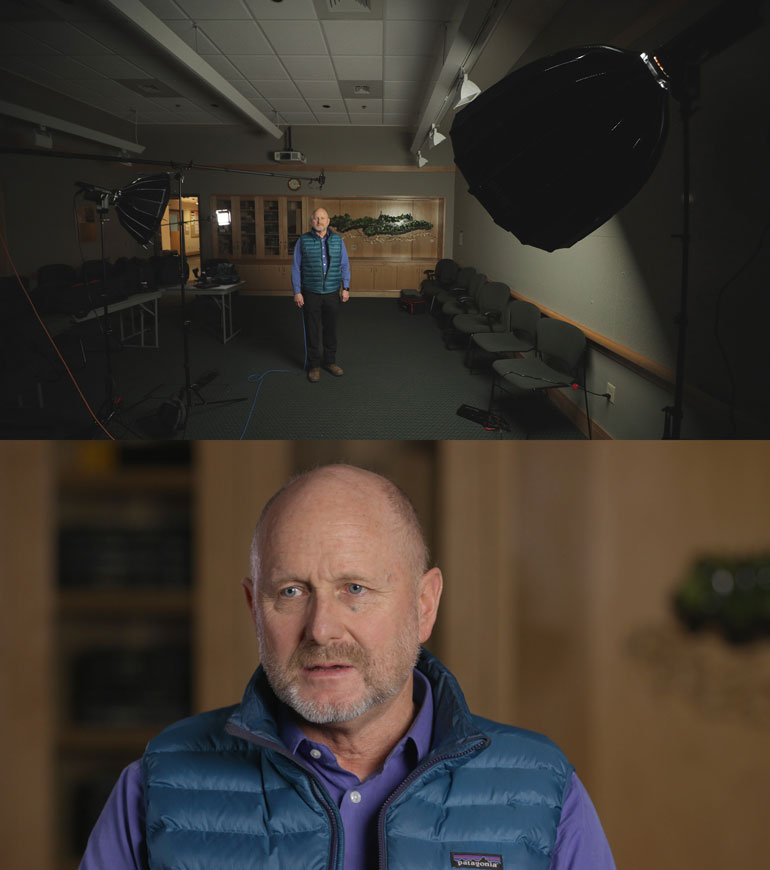
If you can, leave the Light Dome Mini assembled while you travel to and from your gig - it really will save a lot of heartache. The Light Dome, unfortunately, is too large to fit assembled into most vehicles.
Because the Light Dome is so large, it creates a beautiful wrap around soft light around a subject’s face. But there’s definitely light spill. In many scenarios, we don’t mind the spill, since it adds a little light to the background, but it could be frustrating if you’re not used to shooting with such a wide light source. Just imagine you’re using a 3’x3’ see through scrim. You’ll need flags if you want to control spill.
One thing to note is the 300D and 120D have slightly different kelvin temperatures. The 120D is 6000K, and the 300D is 5500K. Depending on how accurate you need your lights to match, this could be a deal breaker for using them together to light a subject. For us, we shoot at 5600K and haven’t noticed any negative color casts on a subject’s skin tone yet, but we're aware of the potential for issues with different colors of skin tones, so we'll keep an eye on results.
Barn Doors and Gel
If you plan to use the 300D as a hard light, you will most definitely want the Fresnel Lens accessory, as well as a decent set of barn doors. Aputure has recently announced custom Barn Doors for the 120D and 300D, and they look really solid.
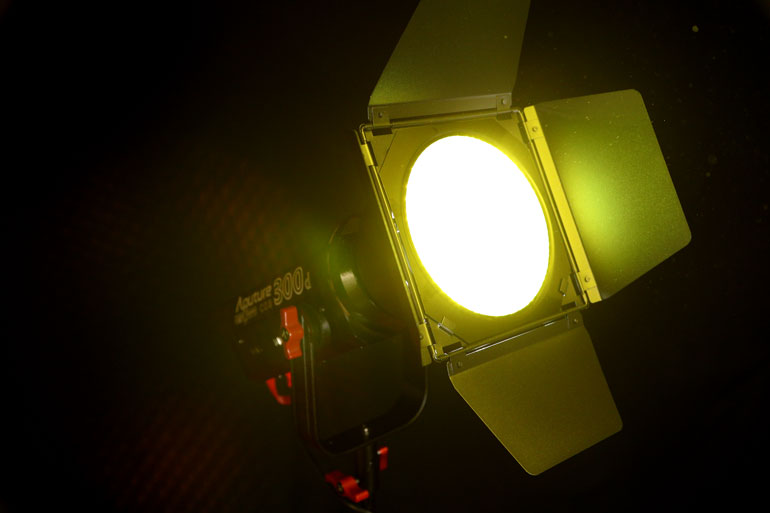
We ended up buying the Westcott Barn Door and Gel kit, before Aputure had announced their upcoming release. It is a Bowens-S mount and works well, with gel holders and minimal light spill from the side. There are cheaper 3rd party barn doors out there, but they've gotten nasty reviews. So, wait for the Aputure release, or get the Westcott version.
What if you want to turn the 300D into a tungsten light, but you want to use the Light Dome or another large softbox, rather than a set of Barn Doors, or the Fresnel Lens?
Instead of gelling a large source of light, the goal is to attach a small amount of gel to the area right in front of the COB area. One Aputure 300D user has created a solution that seems to work best - here's the link to the Facebook conversation. He wraps a small piece of gel around the COB housing, and then staples it into a snoot-like shape. This method prevents the gel from coming too close to the COB, which may cause the gel to melt, and it also prevents any non-gelled light spill.
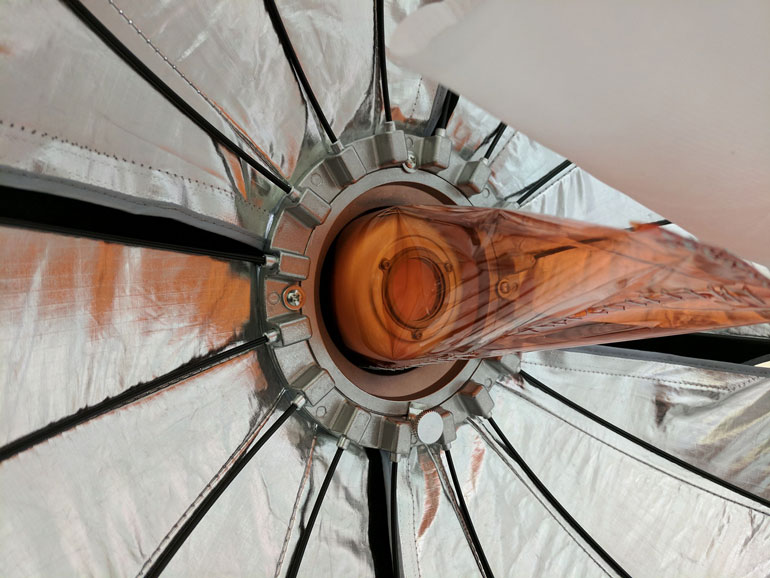
This method is very clever, and for the time being it’s the best solution to turning your daylight 300D into tungsten or fluorescent kelvin, if you need to match other lights in the scene. However, we’re still hoping Aputure comes up with a glass or hard plastic filter that can be attached - maybe magnetically? - to the front of the COB light emitting area. Aputure does a great job of responding to filmmaker suggestions, so perhaps we’ll see something like this in the near future.
But maybe applying filters in front of the COB is a good idea in theory, but difficult to implement. Which leads us to . . .
Aputure 300D Initial Green Fringe
When the 300D was finally released, the initial hype was quickly transformed into a mini hysteria, where buyers started noticing and complaining about a green cast around the fringes of the light’s output.
After many tests and debates, it was concluded that some models did indeed have a green bias, and the reason is that the COB LED by itself does not have a very high CRI rating, so Aputure engineers placed a filter over the COB, in order to correct the color output. It seemed to work fine, but somewhere around quality control, a few filters were slightly misaligned.
So with a tight modifier such as the included lamp head/reflector, the green spill around the COB chip would be contained, and any issue wouldn’t be visible. But when the 300D was naked or used with a wide diffuser like an umbrella or softbox, the green fringe would spill out and cause the output to be discolored.
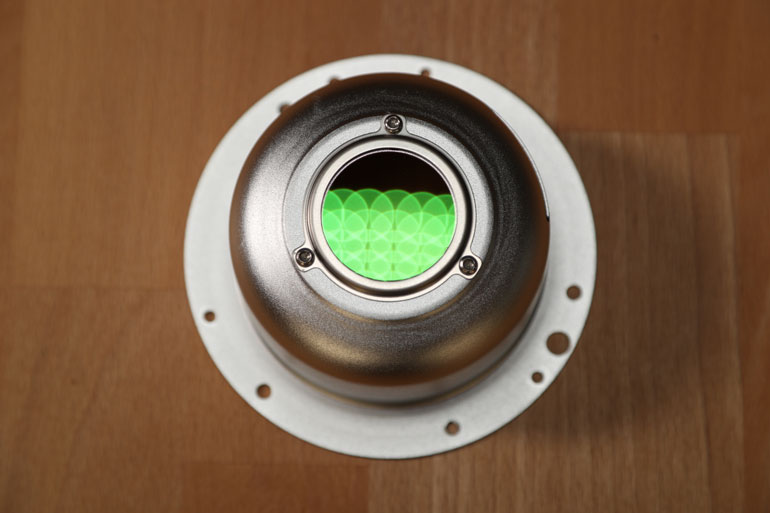
In response to these consumer complaints, Aputure issued free fixes for anyone who filled out a form. The fix came as a replacement filter for the COB. We’re not sure if the filter was bigger or just better aligned, but it did the trick.
To be honest we hadn’t seen a green fringe on our 300D but we installed the filter anyway. After reading and re-reading the instructions (just to be sure), it took a few minutes to install the new filter. We were happy that Aputure found a solution to the problem, without involving the time consuming and expensive process of shipping units back for repair.
At the time of writing, Aputure has said that all models at retailers are being sold with the fix already applied. That means that Adorama or B&H Photo will have the right stock. We’re unsure about Amazon purchases, however, since those sellers tend to be all over the place.
Aputure 300D Powering Off
In addition to the green cast, another issue has plagued the initial 300D release. On some models, if pointed up at roughly 45 degrees or higher, and set to 100% brightness, the 300D would over heat and shut off after a few minutes.
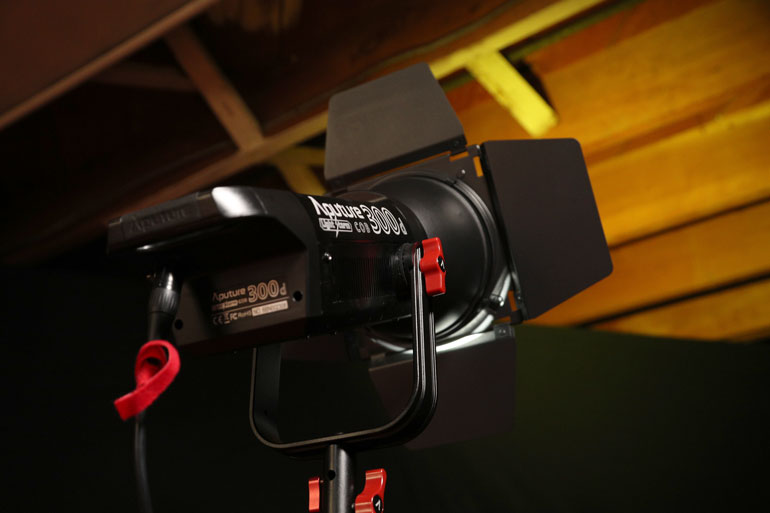
This is a pretty serious issue for any videographer who wants to point the 300D up at the ceiling or a reflector for a bounce fill, which is a fairly common use for a light. It’s also a potential issue if you want to set the 300D on the floor or table, and point it up.
After a few rounds of customer feedback, it was discovered that the issue could be temporary resolved if the 300D brightness was set to 95% or less. Not a huge difference, at least not enough to send the unit back, in our opinion. But it’s certainly frustrating, especially for filmmakers who aren’t aware of the temporary solution and are left with a non-working light at a shoot.

This, too, has been fixed in new models, and Aputure has stated that any 300D purchased from major retailers from now on won’t have either the green or power issues. But if for some reason you get a model with the power issue, Aputure will happily issue a replacement or a refund.
It’s nice that Aputure has made it fairly easy for its customers to get replacements, repairs, or refunds for any of their purchases. And it’s no surprise that a brand new light with this much punch for the cost will most likely have to cut corners somewhere - in this case, the quality control department. But these two issues have definitely soured some of the hype surrounding the 300D.
Conclusion
In the world of video production equipment, it’s always good to step back and appreciate how far we advance every few years. In lighting, the simple metric of performance to cost ratio has exploded recently.
But there are always compromises and careful decisions to be made, especially when every piece of gear you bring to a shoot can either be extremely useful, or extremely frustrating. Or worse yet, a dead weight that you never end up using, but lug around anyway.
In lighting, we have seen a wide variety of fixture types come out in the last few years, and we’ve used most of them in our own productions. From LED panels, to flex lights, to tubular Ice Lights, and now fresnel lights. Each type of light brings with it certain advantages and disadvantages, and we can’t ever discount user experience, portability, and versatility, even at the expense of pure output.
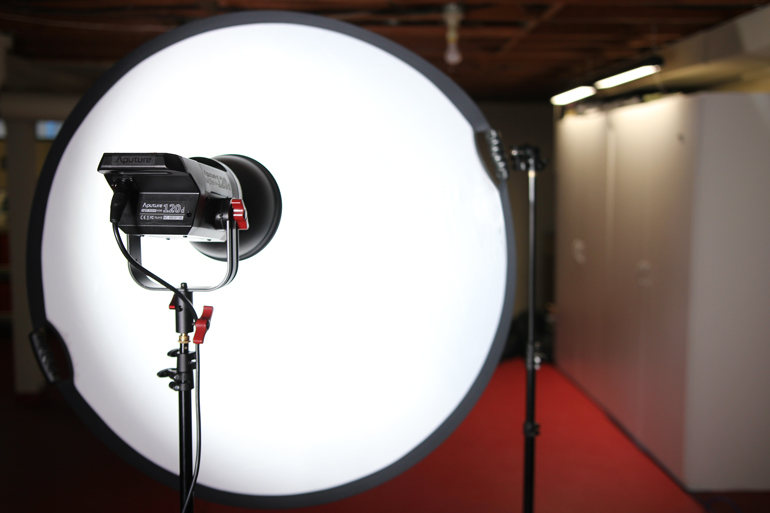
Aputure 120D bounce with a Westcott Ice Light 2 as the key
The Aputure Light Storm COB 300D arrives at a brilliant cross roads between size, shape, weight, versatility, output, and cost. That’s why in our TL;DR, we say that the 300D comes really close to satisfying the “god light” desire that many entry level filmmakers spend years searching for.
Of course as professionals we know that there’s no such thing as one perfect, end all be all piece of gear, especially when it comes to lighting or lighting kits. And we also know that we must buy new things in order to rack up expenses, or send our earnings to the tax man. And so buy we do, year after year.
The Aputure 300D is a superb purchase this year, and possibly for a few years to come - that is, until Aputure decides to release the 300D II. They’ve recently announced the 120D II, so perhaps a 300D follow up isn’t too far away.
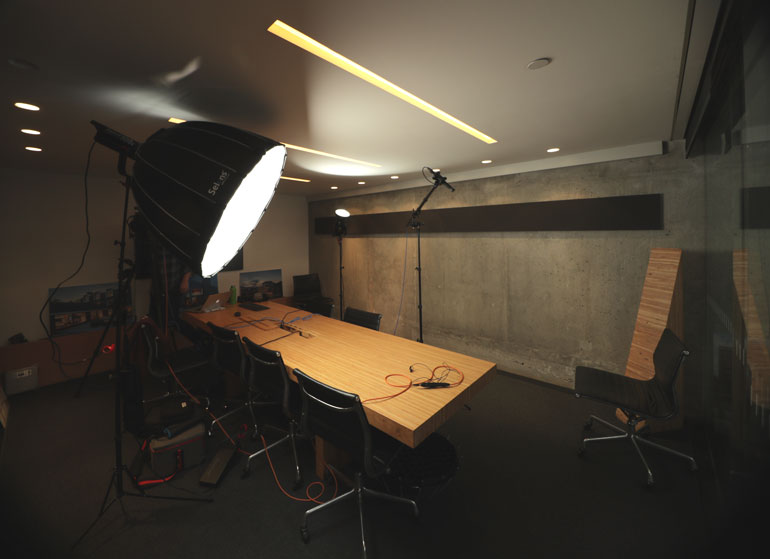
Aputure 300D and 120D for a conference room interview
We find it to be an incredible light to have in your arsenal, even if you only shoot interviews and never light scenes for documentary B-roll or narrative projects. The fact that the 300D enables dependable outdoor shooting means we can now consider exterior interview locations without half the concerns (the other half is outdoor audio, which we still have reservations about, until the perfect mic . . . Schoeps SuperCMIT, are you listening?).
If you buy the 300D, you’re in for a secondary buying journey, one that’s a little fun and not nearly as expensive as selecting a light. And that is the lighting modifier search. There are many Bowens-S modifiers, and the Light Dome is only the tip of the iceberg. Consider the Aputure Space Light, and how it could transform your two person shoots.
Whatever you do, don’t skimp out on the Fresnel Lens accessory. It’s essential to making the 300D one of the most versatile and powerful lights out there, while still being powerable by a couple V-mount batteries. Oh and don’t forget the batteries, you’ll need a couple that are at least 11 Amps and 150WH (Aputure recommends 12A and 190WH to be safe).
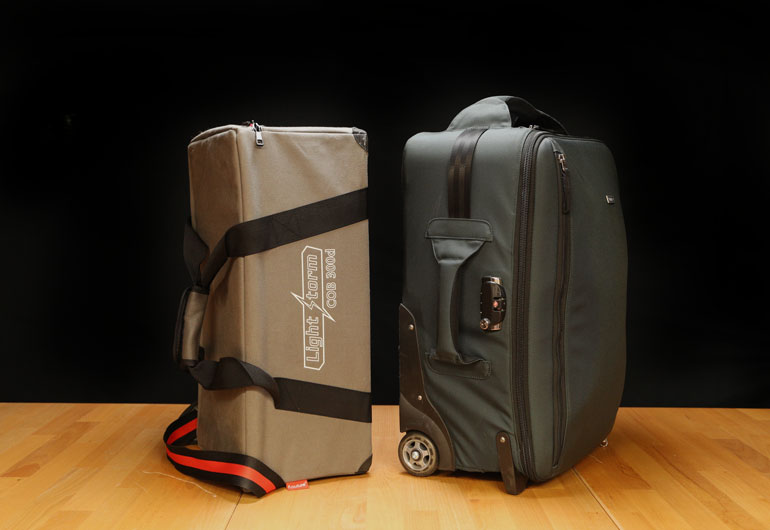
One 300D next to a kit of 4 Aputure LED panels in a Think Tank Video Transport 20
Still, as much as we love and recommend the Aputure 300D, we’re not letting go of our LED panels. Always packed away in a Think Tank Video Transport 20, our go-to light kit is an Aputure Light Storm LS1S, a Light Storm LS1C, two Amaran 672W panels, and a few Aputure M9 lights for background pops. Plus, of course, a bunch of Sony NP batteries and a Watson charger, and a few D-Fuse softboxes.
The thing is, this kit is about the same size as the 300D bag. Although it weighs a lot more, that’s amazing for how much light power we can fit into a little roller. It’s especially essential for air travel, when the 300D has to either count as a checked bag on its own, or you’ll have to scrap the 300D bag and try to pack the light and accessories separately in your suitcase. Whatever you do, it’s just not as conveniently packable as panel lights.
And then, of course, there’s the issue of color convenience. And for that, we turn to up and coming RGB lights, in all the various shapes and sizes they’ll inevitably be housed in. What a time to be alive.
Aputure Light Storm COB 300D - check price at B&H
For additional reading, check out our Aputure article on everything they make